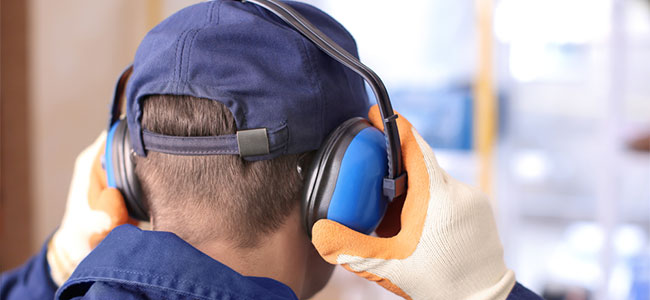
Protecting Workers From an Invisible Danger
Hearing protection in the workplace is critical in not only preserving workers’ hearing, but in protecting them from larger safety risks. How can companies prevent hearing loss?
- By Tim Turney
- Sep 06, 2023
Nearly 60 percent of former construction workers suffer from some form of hearing loss, research by the Center for Construction Research and Training has found. Noise-induced hearing loss (NIHL) is preventable, but the effect is permanent, resulting in life-changing injuries that can seriously impair a worker’s quality of life and place that at further risk within the workplace setting.
Employees with hearing loss, working in any industrial sector, are at risk of additional accidents or injuries if they struggle to hear critical alarms, moving vehicles, emergency broadcasts, or other hazards on site.
Despite having a duty of care to protect employees from workplace hazards that can cause injury or illness, employers have no obligation to test workers’ hearing in the construction sector, even if noise exposure levels exceed the Occupational Safety and Health Administration’s (OSHA) Permissible Exposure Limit (PEL). For this reason, hearing loss is rarely recognized as an ‘occupational disease’ in construction. The Bureau of Labor Statistics (BLS) reports that hearing loss is underreported due to this fact, and as a result, hearing loss data for the construction sector is not comparable with data for general industry.
However, the repercussions to the employer if they do not seriously consider the auditory welfare of their workforce can be significant. The OSHA estimates that employers spend $242 million annually on workers’ compensation for hearing loss disability.
Despite the risk of irreversible damage to health, one-third of noise-exposed workers report not wearing hearing protection. Although hearing protection is a ‘first aid’ measure until it is possible to reduce noise exposure to a safer level through changes to the tools, equipment and schedules used, knowledge of its application can dramatically increase its effectiveness.
Identifying Workers Most at Risk
Any sound over 85 decibels(dB) can damage hearing, meaning the operation of concrete mixers, forklifts, jackhammers, nail guns and masonry drills all pose a permanent risk to worker health if effective control measures are not put in place. A noise survey can help employers determine which employees are at risk.
This article originally appeared in the September 2023 issue of Occupational Health & Safety.